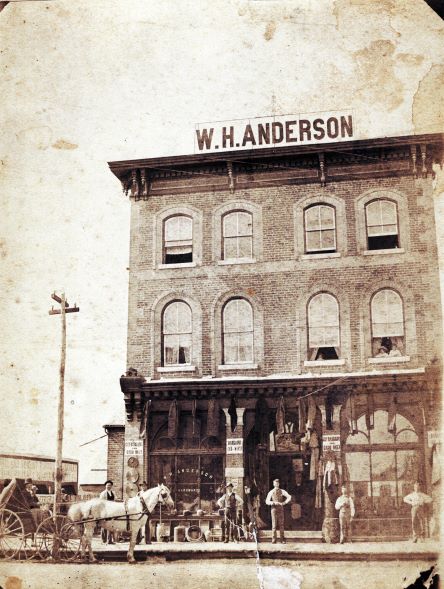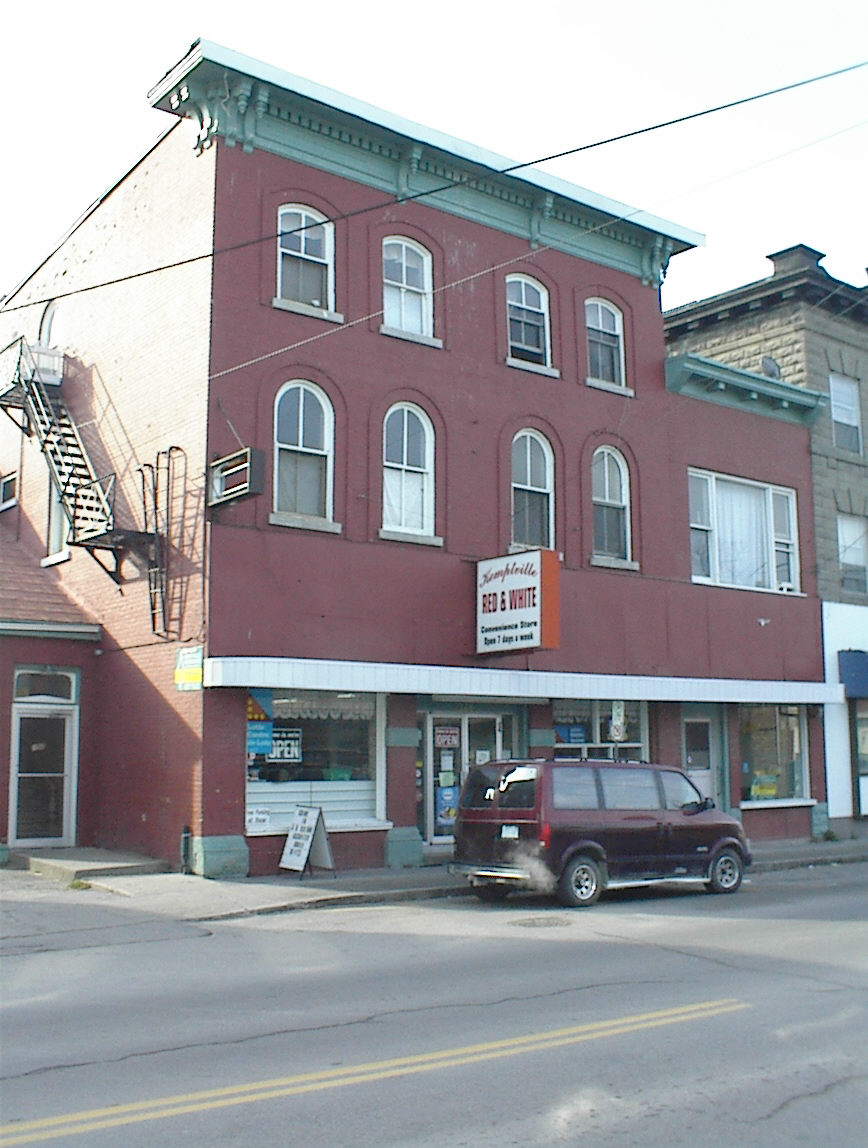This week is Heritage Week in Ontario, so it is time to take our annual look back at some of the places and events which form part of our common history. 2023 marks the 25th anniversary of North Grenville, since Oxford-on-Rideau, South Gower, and the Town of Kemptville were amalgamated. This year is also the centenary of local boy-made-good, G. Howard Ferguson, becoming Premier of Ontario in July, 1923. In future issues of the Times, we’ll be publishing a series on the life and times of Ferguson, the man who gave us the Kemptville College, and, perhaps most notably, the LCBO! We mark the past in the photographs and the memories we share. We mark the present in the stories and reports of the week, and we look to the future too. Our thanks go out to the North Grenville Historical Society for the use of some of the photographs that form part of their archives, maintained in our name and for our inheritance to the future.
HERITAGE WEEK



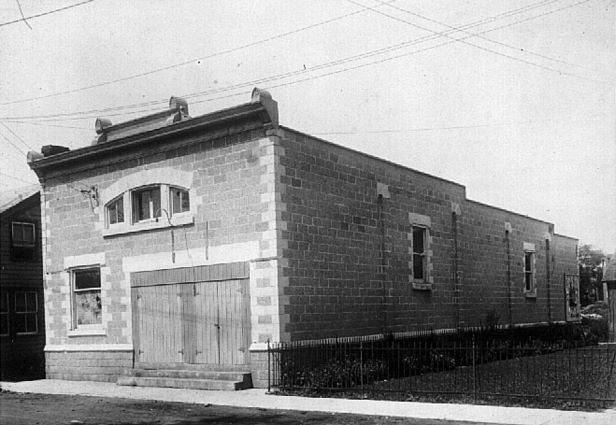

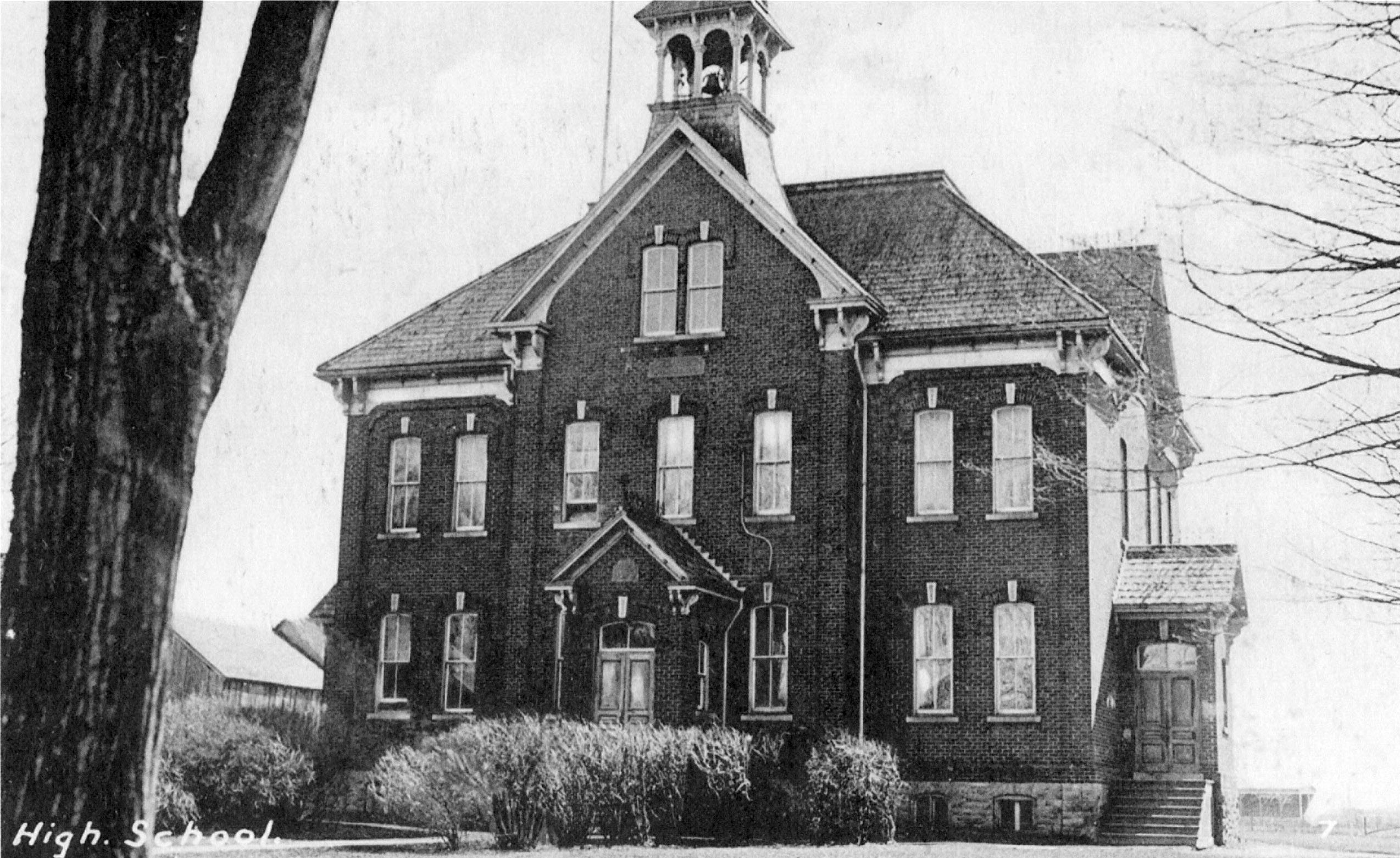

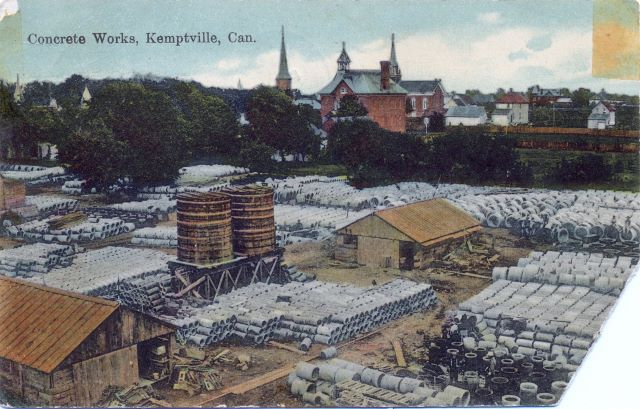



Kemptville Public School, 1873-1936
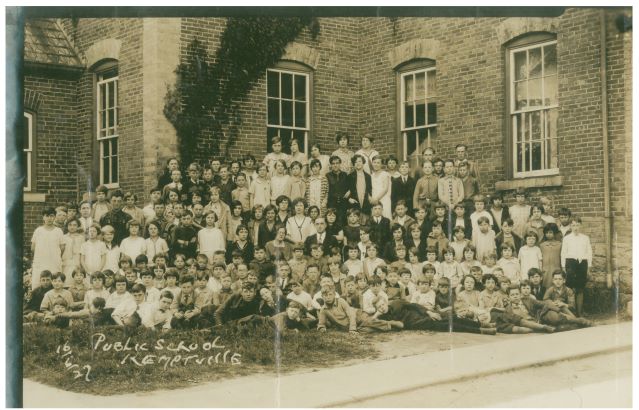

by David Shanahan
The B&H Grocery store in Kemptville stands today on what was once the site of this really lovely school. The Kemptville Public School served the children of Kemptville for sixty years, before being destroyed in a suspicious fire in March, 1936. Before it was built, there were two School Boards in the Village of Kemptville: one for the Grammar School which was in the building still standing at 205 Clothier Street west; and a Board for the two Common Schools, also still standing. One was at 402 Oxford Street, on the north side of the village, and the other was at 12 Elizabeth Street on the south side. But, in 1873, the Boards merged and a new combination Public and High School was built on the site between Rideau and West (now Sanders) Street. The two-storey brick building had four classrooms, and employed three teachers for the Public School, and one for the High School. Supply teachers were paid the generous sum of $1.50 per day in the Public School.
The school was very successful and drew students from around the area, so that, by the mid-1880’s, this building was too small to cope with the enrollment. In 1888, a new High School was built on Prescott Street, and the older building was used exclusively for Public School classes from that year on. By the time of the First World War, the levy on local taxpayers for the school was $3,000, spread across the taxpaying population, as it was local residents who made up the Board. Non-residents of Kemptville were charged 40¢ per month to attend the school, but this was raised to $1 a month after 1914.


The members of the Public School Board represent some of the families with the longest history in Kemptville. Names like Sanders, Kilfoyle, Ferguson and Eager were noted, and many of the leading business people in the village put time and energy into their roles supervising the school and its activities.
In March, 1936, the school burned down. This was just three months after an equally suspicious fire had destroyed the High School on Prescott Street, and there seemed little doubt in the minds of residents at the time that both fires were the result of arson, possibly by students. The Kemptville Fire Department turned out to try and save the building, but without success. It was estimated that the loss of the building cost around $35,000, but insurance on it and its contents was just $20,000, a serious loss to the Board. But, by the end of the year, a new school had been erected on the site of the old High School, repeating the original function of the Public School in catering to both Public and High School classes.
The old Public School was replaced by a garage, and, in 1963, by the new B&H Foodliner Store. As a side note: the area that is now the parking lot for the B&H, as well as that covered by the old Giant Tiger building, was once occupied by a few homes and stores, also long gone.
The school was located in the centre of the lot, as shown in this 1917 map
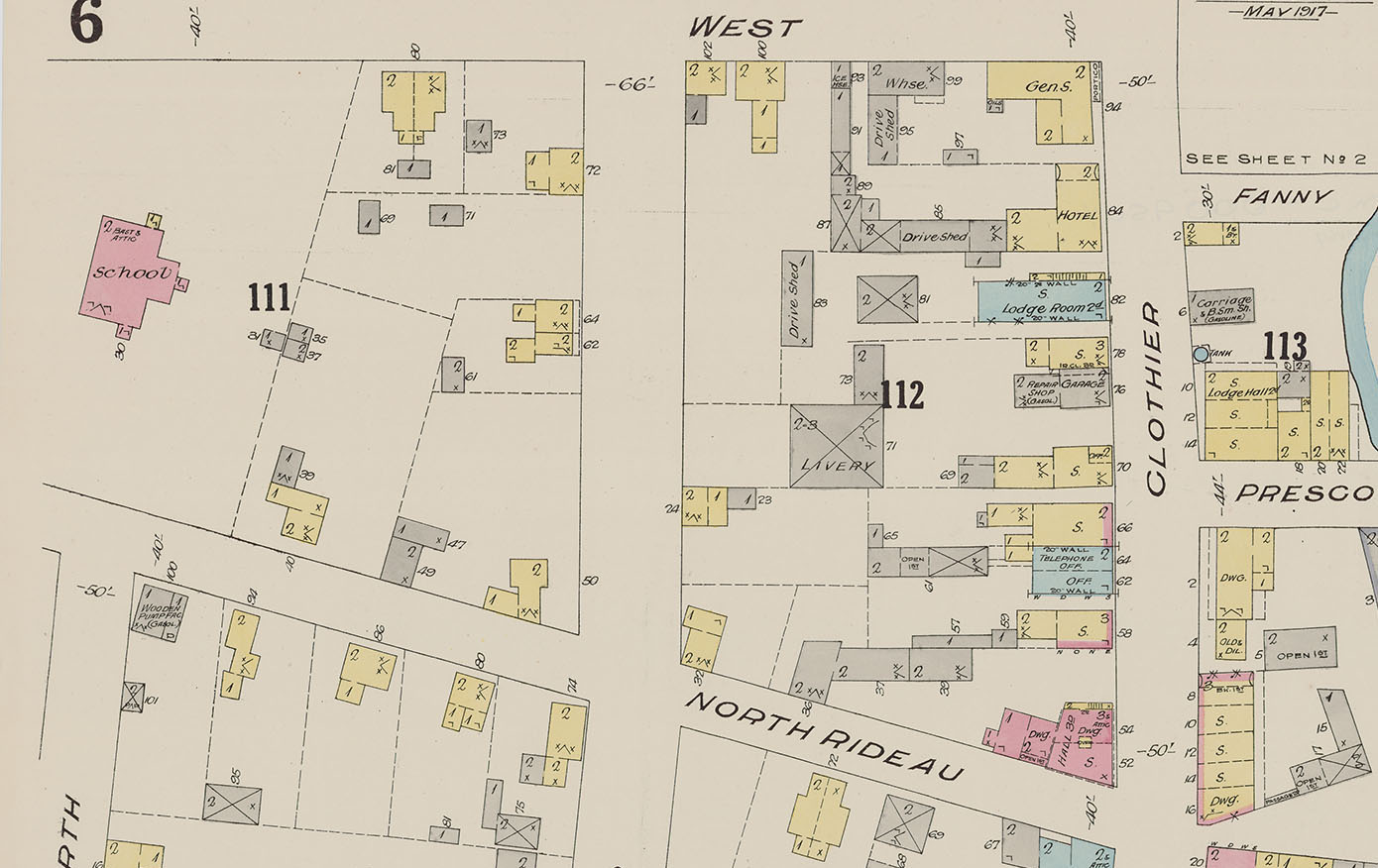

Home Hardware store, Prescott Street
This is an older building in Kemptville that may be hard to recognise, but it stands today in a part of town that was once the residential centre for the social and business elite. The illustration is from the Canadian Illustrated News of 1878 and shows the home of Thomas Blackburn on the corner of Prescott Street and South Rideau Street, with its gardens and surrounding fence. Today, it is the Home Hardware store and South Rideau has become Elizabeth Street.
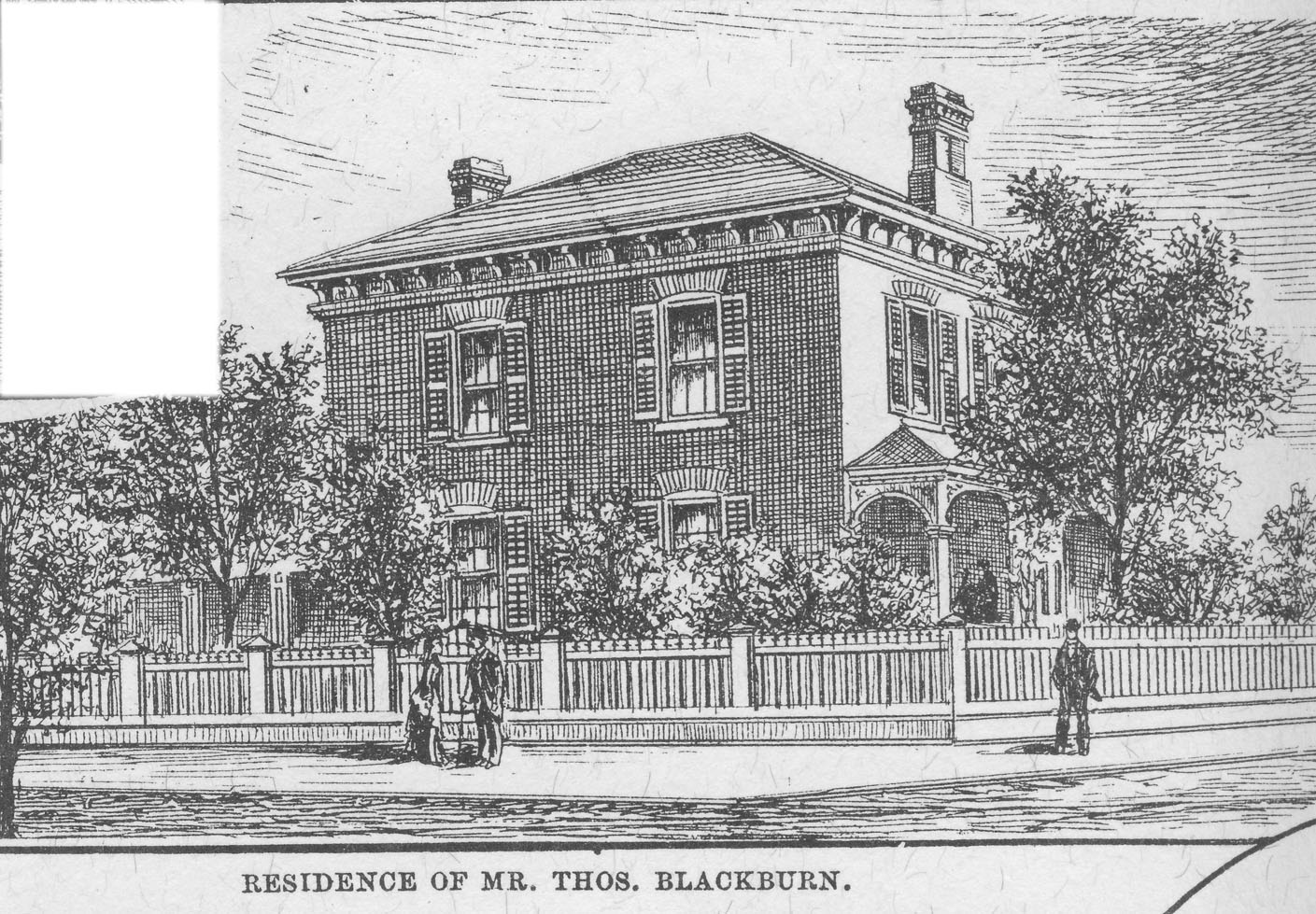

It remained in the family until 1914, when Isabella Blackburn, described as an unmarried spinster, sold it to Nathaniel Kennedy. Thomas Robinson lived here between 1926 and 1949, running an insurance business from his home. Then, in 1950, the building was bought by James Kennedy, who had come to Kemptville in 1946 and ran a hardware store out of the Finnerty Block (now the Clothier Inn). He moved the business to the Blackburn house in 1950, and it has been operating there under other owners ever since. It was bought from Kennedy by the current owner’s family, the Hamilton’s, in 1966.
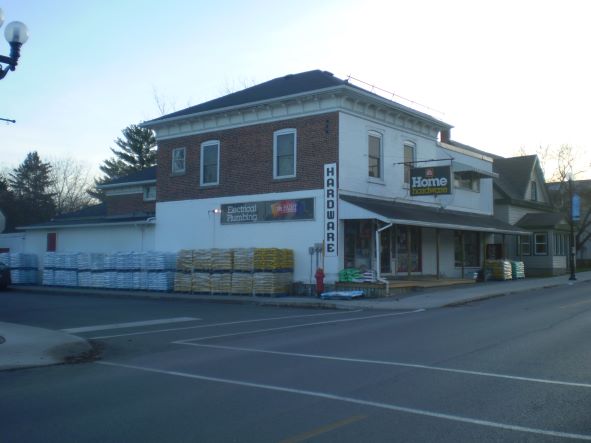

Kemptville's first main street


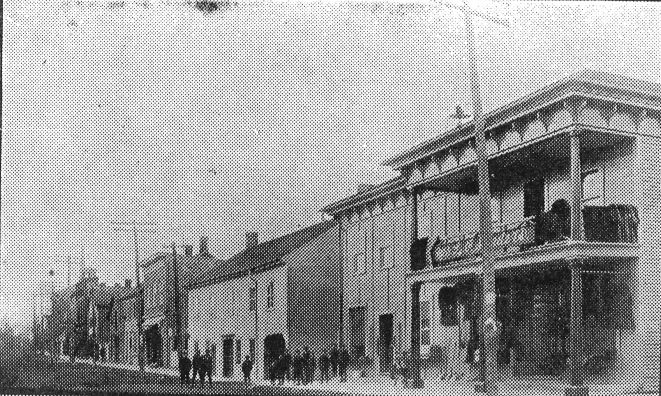

by David Shanahan
Kemptville began on Clothier Street east. It was along this street that the early village developed, where hotels and service industries such as blacksmiths, general stores, and the post office were located. The street parallels the river, the focus and reason for the village from the beginning in the 1820’s. This is the land that Lyman Clothier bought in order to build a saw mill in 1819, and it remained the main street of Kemptville until after the fire of 1872, which destroyed much of Prescott Street. When it was rebuilt, the focus of the village shifted across the river. But Clothier Street east continued to be an important thoroughfare, the site of many important businesses in the commercial life of the village.


Kemptville Hotel
Lyman Clothier built a house on this site around 1820, one of only two residences in Kemptville at the time. His son, Ambrose Clothier, built the present edifice as his family home around 1861, from bricks made from clay taken from the river bank, where his family owned a brick yard. Originally, a cupola topped the building, which was transformed into a feed store and home by Henry Dell after 1868. Dell ran a liquor store, and the Orange Lodge occupied the third floor after 1880, accessed by outside stairs. A feed warehouse extended along the rear where there is a parking lot now. This store was taken over and operated by Joel Anderson between 1912 and 1940, although the building was actually owned by James Fairbairn. He, in turn, sold it to Charles Graham who turned it into a hotel in 1940, and it remained as such through subsequent owners until the late 1990’s. Since then, it has housed a number of commercial businesses. The building to the east was an extension to the hotel built much later.
Craig store
Robert Craig bought this property in 1878 and he erected this building as a residence and shoe repair shop. He stocked both pre-made shoes and made-to-order, and trained generations of shoemakers in Kemptville. When he died in 1899, the building was sold to the O’Neill family and became one of the smartest hat shops in town, run by Misses Anna and Julia O’Neill. Their clientele expected sophisticated and creative millinery, and all were unique works for just $10 each. After almost thirty years, the store changed hands and became Ross’ Grocery and Candy Store. It remained a store for most of the years since, although the exterior has been altered radically over time. It is now the home of Get Cronk’d.
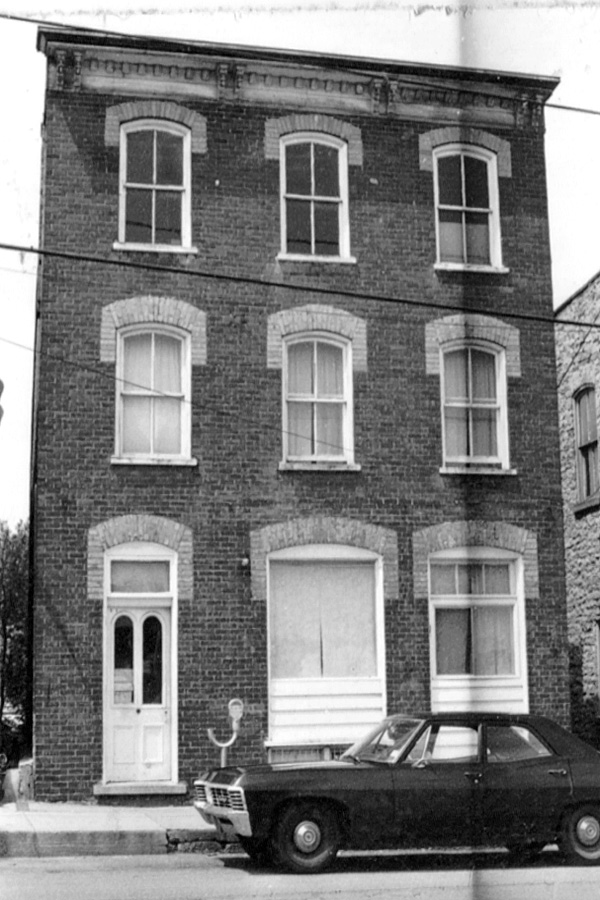

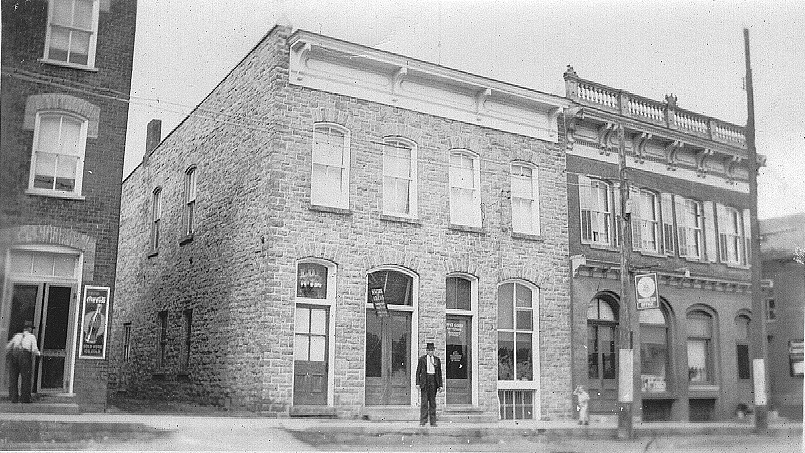

Hyde Smokehouse
Thomas Hicks erected this building around 1880 and operated a grocery store, living above the shop. He sold it to Alphaeus Patterson in 1890. Patterson was a baker who later moved to what is today Grahame’s Bakery. It then became a furniture store, with offices upstairs. The future Premier of Ontario, G. Howard Ferguson, had his law offices upstairs in No. 13, and he was followed by the firm of Boucher & Loucks, solicitors to the Corporation of Kemptville. J. G. Pelton bought the building in 1899 and moved the telephone exchange there, where it remained for more than fifty years. In 1923, the Orange Order bought the building and had their lodge rooms upstairs, renting the ground floor and basement to Bell. The Order sold the premises in 1984, since then it has operated primarily as a restaurant. The original tin ceiling on the first floor won the building a Heritage designation in 2008.
The Post Office
This is the first of two vacant lots sitting side by side. Asa Clothier built a blacksmith shop on this site in 1816, before selling the property in 1826. It came into the hands of the Leslie family in 1837, and by 1862 Robert Leslie had erected the imposing building pictured here. It became Kemptville’s Post Office, with Robert Leslie as Post Master. The Advance newspaper started here in 1888. A serious fire in the print shop in 1909 caused severe damage to the building, and shortly thereafter, the Post Office and newspaper moved to new locations on Prescott Street. In 1943, Leabourne Elliott bought the building and, as the first IGA store, brought supermarkets to Kemptville. It was later taken over by the CIBC bank, and then served as a pizzeria before being demolished in the 1990’s.
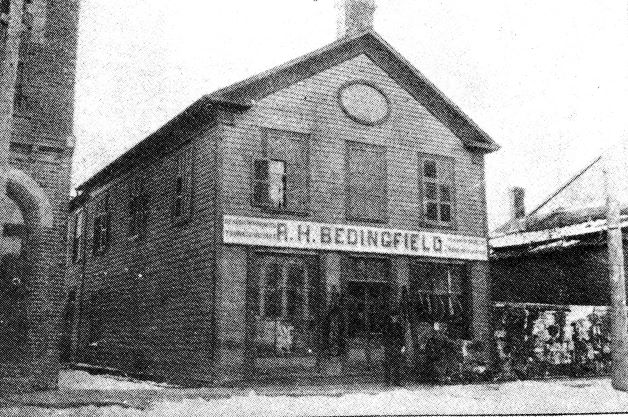

Bedingfield’s / Bright Spot
This is the second vacant lot. In 1870, Robert H. Bedingfield bought a piece of land fronting on Clothier Street and opened a harness salesroom and workshop. In 1882, he expanded his property in the rear back to Oxford Street and carried on selling saddlery, trunks, valises and other leather goods. After his death in 1912, the property changed hands numerous times, bringing various businesses to the site. Creswell Johnson had a machine shop and Garnet Van Allan ran the Dodge dealership and sold radios and washing machines. Kemptville Motor Sales sold to the Swedloves in 1959, and it became part of that family’s holdings along Clothier Street. It has been a restaurant for a number of years, having being added to on the east side. It was demolished owing to structural problems.
27 Clothier Street East: O’Heaphy’s
This was the site of the very first store in Kemptville. Levius Church opened his store here at the end of the 1820’s and operated it for several years. It was a branch of his main business in Prescott. It was recorded that “The farmers usually paid their store bills in ashes, collected when clearing the land, which the merchants made into potash, and with that paid for their goods”. The first Post Office in Kemptville operated out of Church’s store. There have been a number of businesses on the site, including a machine shop, the first garage in town, run by Del Seymour, and a Salvation Army Thrift Store. An attached building, now the pub patio, housed a series of barber shops over the years. Recently, the premises were extensively renovated, maintaining a traditional shopfront appearance.
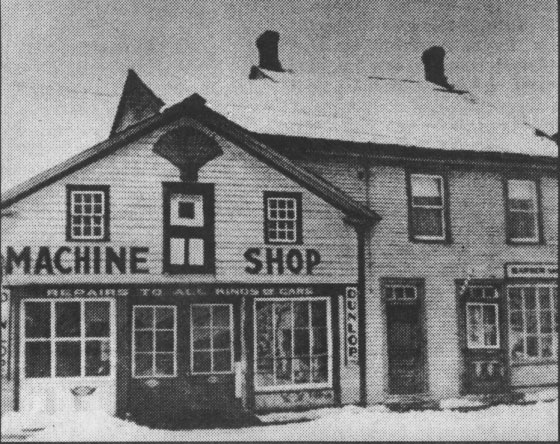

29 Clothier Street East
There were a number of businesses on the site until, in 1872, John Wolfe sold 800 square feet of the land to Robert Kerr on condition that only a stone or brick building be erected. This is the building that stands today. Around 1912, Lodge No. 334 of the Orange Order moved into the upper floor of the premises, which was then the location of Johnston’s Furniture and Undertaking business. In 1922, the building was bought by the United Farmers of Ontario, and the Orange Order moved to the Fraser Block. The UFO, in turn, sold to the Swedlove family in 1933 who opened a grocery and dry goods store. The property was added to the land on the east side (Kerr House) in 1937 and a large furniture store was added to the operation.
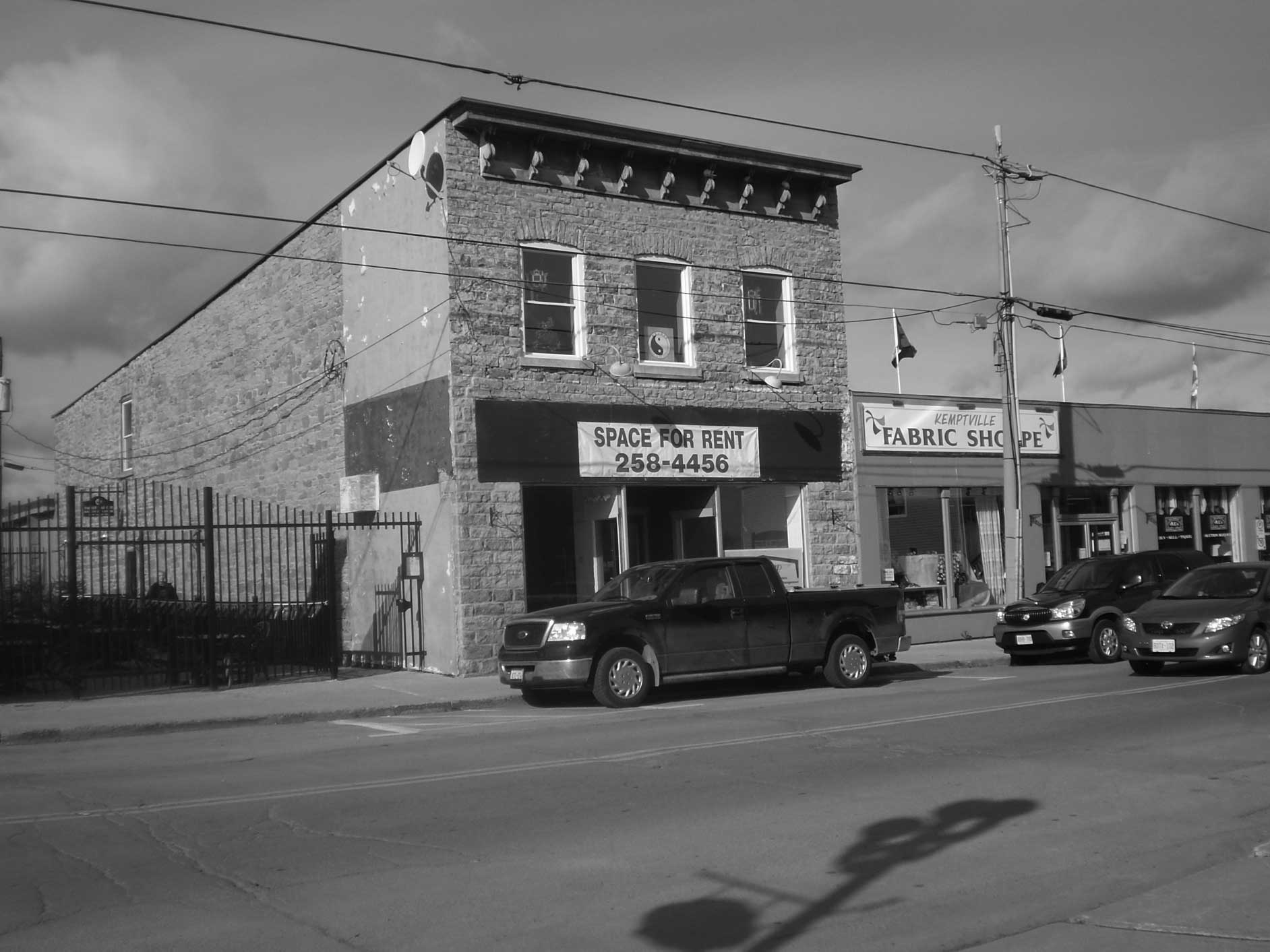

Kerr Hotel
Where there is now a long, low building, there once existed a large, two-story building that served as both a store and a hotel for many years in the life of the community. In 1838, it was a store run by a man called White, and a gathering place for people eager to hear news of the Battle of the Windmill in Prescott. Around 1842, it was bought by Alexander Beckett who opened one of the first hotels in the town. It passed through three owners, including William Johnston, who called it the “King William II Hotel”. Robert Kerr bought it in 1866 and it remained in his family until 1899. It was heated by hot air, lit by electricity and comfortably furnished. As late as the 1930’s, it was a rooming house hotel operated by Dan O’Neill with stables still existing behind the building and a covered passage leading from them to Clothier Street. In the 1950’s, it was bought by the Swedlove family, who added it to their premises next door and ran a furniture store from it. It later became the Canadian Tire Store before that company moved to Highway 43.
Beckett’s Hotel
A parking lot is all that is left of what was once a social and commercial centre for Kemptville. Residents today remember Scobie’s Store and the billiard hall. But the original building dated from 1832, when it was erected by Mahlon Beach as a hotel, which he ran for a number of years before selling it to Thomas Beckett. Beckett’s Hotel was where Squire Bottum held court sessions in the 1830’s. The public sale of Clergy Reserve lands were held there in 1833.
In the 1840’s, Beckett sold the hotel to William McGregor and moved to Beckett’s landing where he became the new bridge master. McGregor replaced the older building and continued to operate the hotel, now called the “American House Hotel”, until 1880, when he converted it to use as a store. He had been in business with L. P. Sanders in a location across the street for a couple of years before they moved their main business to the old hotel. The building was destroyed by fire in 1991.
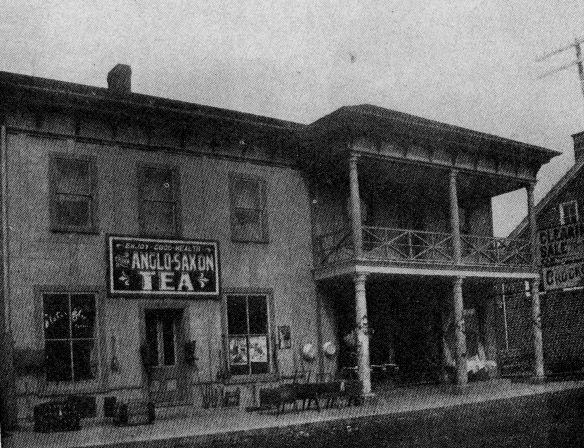

Anderson & Langstaff Store, Prescott Street, Kemptville
by David Shanahan
This has been the site of a store since at least 1850, when Thomas Baldwin had a cabinet shop here. lt then became the general store of Andrew Blackburn, and it was another of the victims of the 1872 fire which destroyed almost all of Prescott Street. Blackburn rebuilt in brick after the fire. Designed by King Arnoldi, who had worked on the Parliament Buildings in Ottawa, that building became one of the first, and largest, department stores in the town of Kemptville. Equipped with extensive warehouses, stables and sheds at the rear and the south, the business was bought out by an employee, William H. Anderson, who further expanded it.
Business was so good that, in 1897, Anderson took on as a partner, Albert Langstaff, and the store became Anderson & Langstaff’s. The partners expanded until the business occupied 20,000 square feet of merchandise. In addition to the twelve employees who looked after the customers, the firm also employed another dozen in making clothing for sale. The sketch of the business dating from 1873 shows that, even then, a large storehouse had been added on the south side to accommodate the Hardware and Large Stock. In 1903, the store handled a very wide range of goods: dry goods, groceries, shelf and heavy hardware, shoes, carpets, ready-made and bespoke clothing, furnishings, furs, oils and varnishes, tiles, and much more.
For many years, in the driveway which runs beside the building, there was a water mill, which pumped water up from a well to a trough where horses could be watered while their owners shopped in the store. An office on the second floor was once the location of the Agricultural Representative for Grenville County.
In 1957, the store was described: “A complete line of modern goods is on display in every department. Grocery, Meat, Electrical, Hardware, Paint and wallpaper, floor coverings, ladies wear, etc.”
In late 1952, an addition was built on the north side of the store to house a Men’s and Boy’s Department. In later years, it became the Red & White store and has had various tenants since the store closed. One section of this historic building is now the home of the North Grenville Historical Society’s History Hub. An appropriate location.
